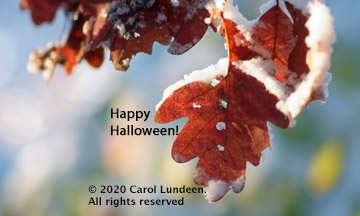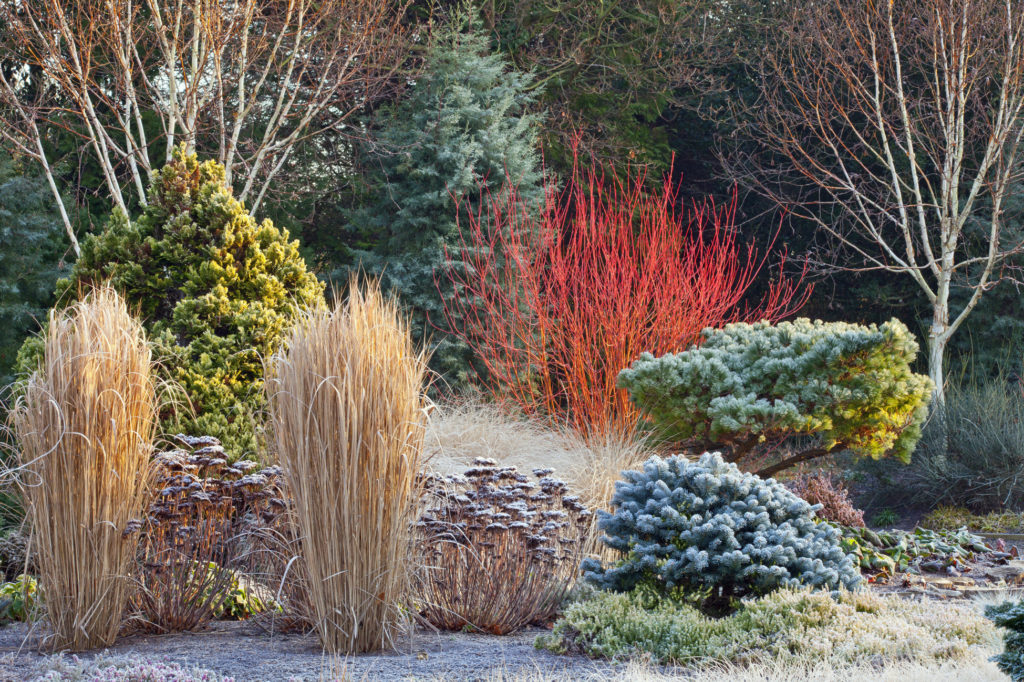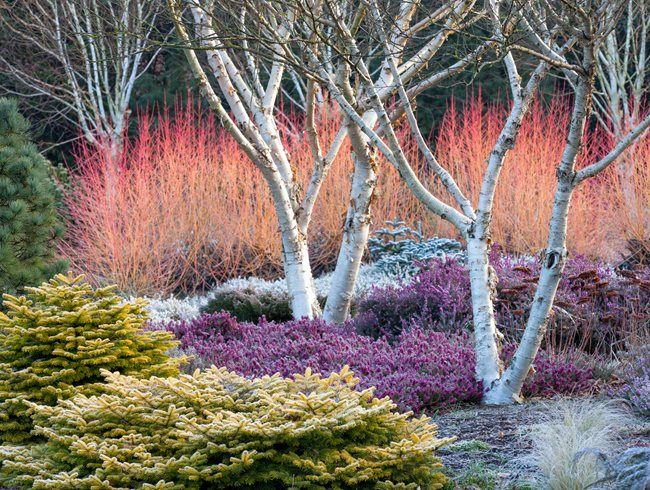Category Archives: Trees
Turn Your Lawn in Pollinator Gardens and Wildlife Habitat
Check out our progress on the turf-to-habitat project in Seekonk, MA, like it if you like it and subscribe it you want to know more about native plant design and consulting in SE MA.
FULFILL THE DREAM OF CREATING A POLLINATOR GARDEN
WHY NOT TURN YOU LAWN INTO A CERTIFIED HABITAT GARDEN FOR BUTTERFLIES, BEES, BIRDS?
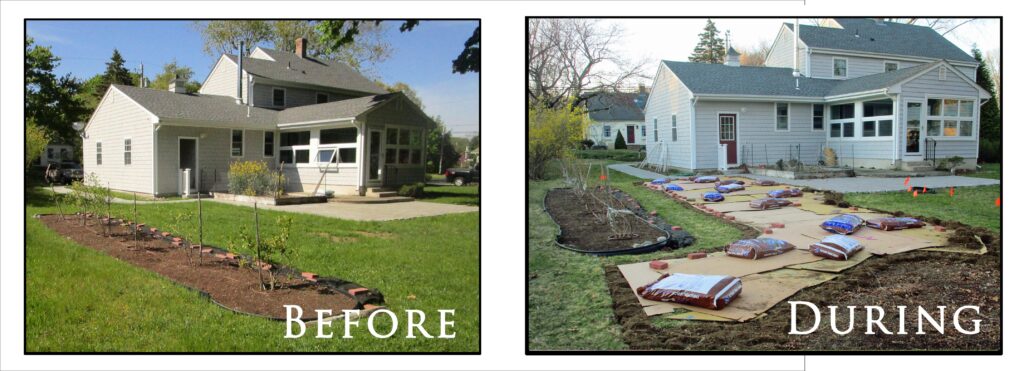 We’re helping a homeowner in Seekonk, MA fulfill her dream of turning most of her lawn into pollinator habitat. Collaborating through the iterative design, installation, and maintenance phases, the client herself has gotten earth under her fingernails and dirtied the knees of her jeans every step of the way.
We’re helping a homeowner in Seekonk, MA fulfill her dream of turning most of her lawn into pollinator habitat. Collaborating through the iterative design, installation, and maintenance phases, the client herself has gotten earth under her fingernails and dirtied the knees of her jeans every step of the way.
In the 2020 season we designed and installed two crescent-shaped ornamental landscape beds for MA native trees, shrubs and perennials. In the spring of 2021 we’re expanding upon last year’s work by tying in a larger portion of the back yard lawn. Because we have time on our side before the arrival of native plant meadow kits from the Native Plant Trust, we’re using the sheet composting aka lasagna method of turning lawn into garden beds.
Using flags and garden hoses, we laid out the shape of the new planting area, tweaked it, then committed to it by laying down two layers of heavy cardboard that came from local bicycle and appliance stores. The cardboard keeps sunlight from the grass to keep it from growing.
On top of the cardboard we’ll be laying down high quality drip irrigation hoses, aka pipes, that will tie into the existing lawn irrigation system. The pop-up sprinkler heads of the zone where this section of pollinator bed is going were removed and capped to preserve water, water pressure, and associated financial costs. Continue reading
Sharpen the Saw at the 27th Ecological Landscape Alliance Conference & Eco-Marketplace: March 3-4
What to do for your habitat and pollinator gardens this winter? It’s learning season!
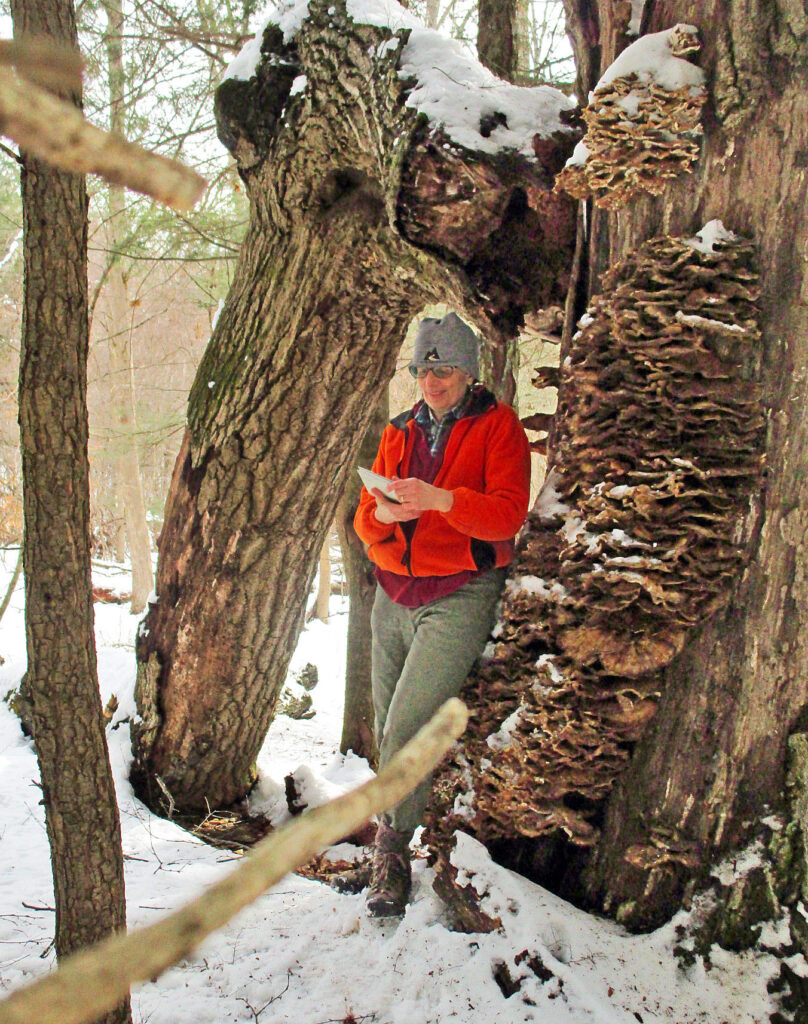
Garden-911 Boston owner Carol Lundeen learns to estimate the age of an old growth northern red oak tree. Since the actual age of trees cannot be determined without cutting the trunk and counting its individual growth rings – or by using a core boring tool – she instead used her outstretched arms as a measuring tape to estimate its circumference, which was more than three times her reach. Dividing the circumference by pi (approx 3.14), she arrived at the DBH (diameter at breast height). Using an arborist multiplication factor specific to northern red oaks, she estimated that this Quercus rubra lived for about 265 years old before its growth potential, environmental and cultural factors brought on its demise – though it’s now continuing the cycle of life by being home to walls of fungi, birds, insects and other wildlife.
Nothing like having something inspiring to look forward to during a pandemic – like learning! The Ecological Landscape Alliance’s 27th Conference and Eco-Marketplace lights up my calendar on March 3-4 and I can’t wait to sample the design, climate change/resilience and inclusion tracks. Below are the top ten talks I’ve circled so far. For more info, visit https://www.ecolandscaping.org – I hope to see you there!
Learn about top new trends in native plant and pollinator gardens, design and consulting:
- Toby Wolf, Wolf Landscape Architecture: “Sharing the Adventure: Design Communications for Ecological Landscapes”
- Gerdo Aquino, SWA Group: “The Aesthetics of Ecology and Why Design Matters”
- Nadia Malarkey, Nadia Malarkey Design: “Regenerating Suburbia One Garden at a Time”
- Lisa Hayden, New England Forestry Foundation: “Engaging Landowners in Sustainable Stewardship”
- Leah Penniman, Soul Fire FarmFarming While Black: “African ” Wisdom for Farming and Food Justice”
- Ryan Serrano, Earth Steward Ecology Inc: “Regenerative Landscape Essentials: Tethering Function and Aesthetic
- Pamela Conrad, CMG Landscape ArchitectureClimate Positive Design – Going Beyond Neutral
- Dan Jaffe Wilder, Norcross Wildlife Sanctuary: “Taking on the Big Places: How to Build and Maintain Self-Sufficient Landscapes”
- Thursday’s Luncheon Discussion: “Diversity, Equity, and Inclusion in Horticulture”
- Anna Fialkoff, Wild Seed Project: “Rewild in 10 Action Steps
About the ELA (Ecological Landscape Alliance)
Here’s the scoop on the ELA, of which I’m a member, quoted from the ELA website:
“Since its founding in 1992, the Ecological Landscape Alliance has been a leader in promoting sustainable approaches to landscape design, construction, and management. ELA’s commitment to innovative ideas and evidence-based practices has made the organization both a trusted resource and a vibrant community of landscape professionals and devoted gardeners.
Our Mission
The Ecological Landscape Alliance advocates for ecological landscape practices through education, collaboration, and outreach.
Our Vision
Everyone who interacts with the land is a steward whose actions are informed by an understanding of and respect for natural systems.”
For more info visit https://www.ecolandscaping.org
Thankful for trees, nooks and crannies this holiday season
Nice sticky snow clings to colorful leaves of a native red maple tree, Acer rubrum, in a Sharon, MA garden. In landscape design, red maples work hard as structural elements, framing other features of the garden. As habitat, they’re provide shelter, food, and nesting nooks and crannies for wildlife.
I am so thankful for our native trees, like this red maple in a Sharon, MA garden. Like most natives, they provide vivid horticultural value in color, form, and texture; provide habitat for wildlife; and intercept and absorb storm water to help mitigate flooding. Every square foot in your garden, and every plant matters.
Happy Halloween from Your Local White Oak Tree
SAVE THE DATE: 9/26 A FIELD DAY FOR MONARCHS!
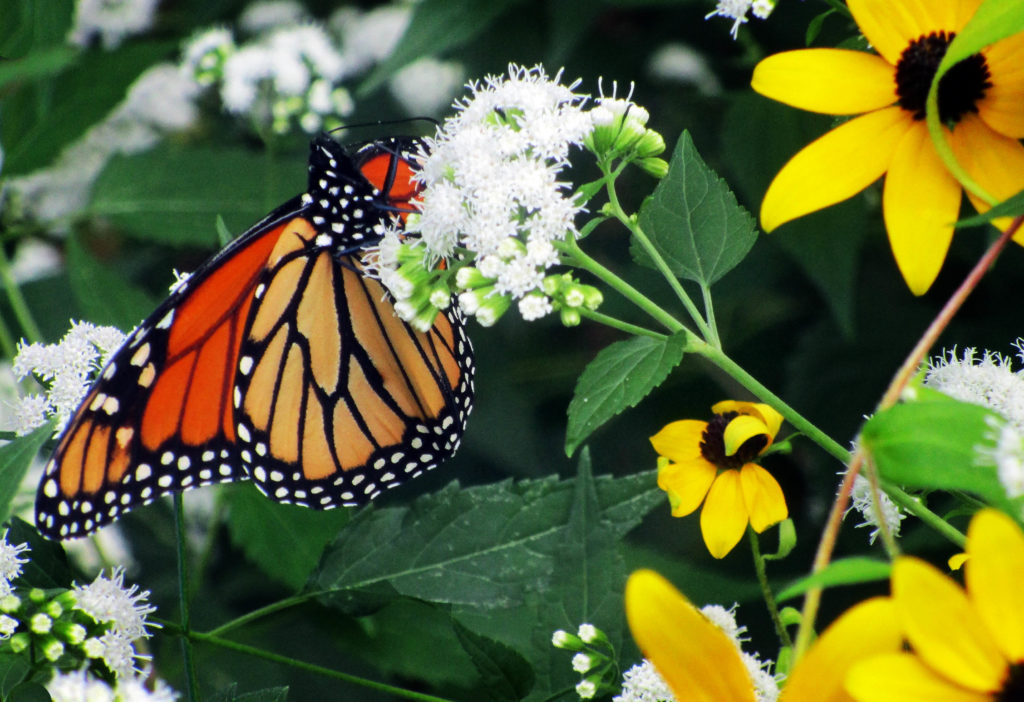 A monarch butterfly, Danaus plexippus, feeds on the nectar of white snakeroot flowers, Ageratina altissima, during its southern migration in a Sharon, MA garden on September 26, 2019. This pair of natives co-evolved since the retreat of the last ice age, and they depend on one another, and the entire web of life, for their continued existence.
A monarch butterfly, Danaus plexippus, feeds on the nectar of white snakeroot flowers, Ageratina altissima, during its southern migration in a Sharon, MA garden on September 26, 2019. This pair of natives co-evolved since the retreat of the last ice age, and they depend on one another, and the entire web of life, for their continued existence.
MONARCHS DELIGHT
September 26th was like a dream to me. I looked out the kitchen window while doing the dishes, and there were several monarchs in my gardens, all at one time. I’d seen one or two here and there this season, but never a parade of several at a time, like that day. I dropped the dishes and dashed out with my camera.
Later, on arriving at a Sharon, MA client’s gardens, Monarchs flew up every time I turned a corner on the mowed paths that snake around many beds where clouds of white snakeroot are now in bloom. I counted at least two dozen monarchs at least twice, and twice saw four monarchs on one snakeroot. It was like living and working in a dream where the monarchs have recovered and are robust in numbers again. It wasn’t a dream, but it was a remarkable parade of flight and feed that I shall not forget. Of course there were other native butterflies, like spangled frittilaries, and native bees, like Bombus sp., and other native plants in bloom.
THE BEST PLANTS FOR POLLINATORS: We can all make a difference in our yards, our gardens, our landscapes, our containers, one plant at a time, by design. Please join me doing so! These are the native plants that support the entire life cycle of the most butterfly and moth species:
Trees and shrubs:
- Oak trees – Quercus sp. such as white, red, pin, black, bear
- Willow trees – Salix sp.
- Black cherry trees – Prunus serotina
Herbaceous plants:
- Goldenrods – Solidago sp. such as blue-stem (axillary), seaside, bog, white, showy, downy, zigzag
- Asters – Symphyotrichum, Oclemena, and Aster sp. like New England, tartarian, heart-leaved, large-leaved, purple-stem, bushy, small white
- Milkweeds – Asclepias sp. like common, butterfly weed, swamp, poke, butterfly, clasping, green
Have fun, and let me know if you need a hand!
GROW NATIVE MA ANNUAL PLANT SALE – JOIN ME JUNE 1st!
Help Massachusetts communities and wildlife thrive by joining me at the annual Grow Native Massachusetts Plant Sale. You’ll find over 2,000 plants covering 120 varieties, and I (and other experts) can help you make smart selections for the particular conditions of your planting area. Just look for me in a blue volunteer apron from 8-11. Shop early for best selection.
From 9-2:30 at the UMass Waltham Field Station at 240 Beaver Street, Waltham 02452, you may find:
- Perennials sorted by sun, shade and part-shade, and all types of soil conditions
- A large selection of evergreen and deciduous ferns
- Grasses and sedges, both cool and warm season
- Trees and shrubs at small sizes so you can take home in your car. Native trees and shrubs do the most to increase biodiversity and to enhance the wildlife value of your landscapes.
AND new for this year: sweet goldenrod (Solidago odora), bluestem goldenrod (Solidago caesia) and spotted beebalm (Monarda punctata)—custom grown just for this sale, as these are top native herbaceous plants for supporting the entire life cycles of our butterfly and moth pollinator friends, and a whole lot of bees’, too.
All plants are native to the eastern United States—the majority indigenous to New England
Learn more: https://www.grownativemass.org/programs/plantsale
Download a list of the species available at the 2019 Native Plant Sale
Shrubs to Prune in Late Winter – Which Ones and How?

The hydrid Kordesii Rose John Davis is a hard-working rose that blooms periodically from June to September on new wood. Prune it in late winter for the strongest show all season.
Late winter to early spring is a terrific time for pruning many shrubs. What should you prune and when? You could study pruning for an entire semester, but here are some basic guidelines. I recommend that you properly identify, then research, each particular kind of woody plant before you consider your first cut:
- Safety first 1) If any part of a tree or shrub is within ten feet of any kind of electric cable or wire, stop and call a professional. 2) Wear gloves and sturdy shoes, and use only sharp tools like bypass (not anvil) hand pruners and loppers, and saws. 3) Sanitize your tools and gloves with isopropyl alcohol or a product like Lysol spray before you start, and again when you’re done pruning each individual plant.
- General concepts Notice the overall shape of the shrub. Most flowering shrubs should be balanced and open in their center. Start pruning by removing all dead and diseased branches, then look for branches that cross or touch each other. Rubbing branches damage the bark tissue, inviting pathogens and pests, so remove one or both branches, depending on their condition, all the way to the base. Branches that grow from the perimeter towards the center should usually be removed. To shorten a branch or twig, cut it 1/4 inch above an outward-facing bud so new growth heads towards the perimeter of the shrub.
- When does your shrub bloom? 1) For spring bloomers, pruning them during the late dormant period (late winter/early spring) will remove flower buds, which were formed last year after the shrub bloomed. No flower buds, no flowers, so wait until after they bloom this year. 2) For later bloomers, pruning them now, before they form this year’s flower buds, is ideal. These can also be pruned soon after blooming.
- Roses Relax. Roses are simply shrubs that benefit from annual pruning. Prune in late winter to early spring (late dormancy) or when the buds start to swell. First cut out dead, broken, diseased and crossing canes. Put all your pruning debris in a trash bag and throw it away. Do not compost. Fertilize your roses with something like Espoma Rose-Tone or a good organic slow release fertilizer by following the directions on the bag. Climbers like to keep their main stems, so keep them fresh by pruning their lateral branches. Once the main stems are three years old, consider cutting one or two of them to their base to encourage new ones. Then cut one or two of the oldest every year. For shrub roses, cut up to 1/3 of the canes, the oldest, thickest woody ones, to their base as you open up the overall look to a vase shape. Cut to their base any super skinny canes from last year. For height, cut the remaining canes to about 1/2 their height, 1/4 inch above a robust outward-facing bud.
Please feel free to contact Carol with any questions.
HOW TO DESIGN YOUR GARDEN FOR WINTER INTEREST
How to design your landscape for winter interest? Here are a few concepts and suggestions. A professional designer can select the best plant materials for your site and especially, your lifestyle.
- first, consider your outdoor lifestyle and circulation around your property
- anchor your landscape design with evergreens that contrast one another in shape, size and color (in addition to needled and broadleaf)
- add deciduous shrubs with striking twig colors
- add a few grasses and perennials for flavor
- as always, make sure all your plant selections will thrive in the existing cultural conditions of your particular planting area (sun, soil, water, wind, drainage, etc.).
- native trees, shrubs, perennials, and grasses often do best in our area, as well as being the best choices for supporting pollinators


